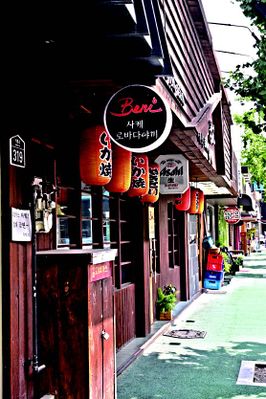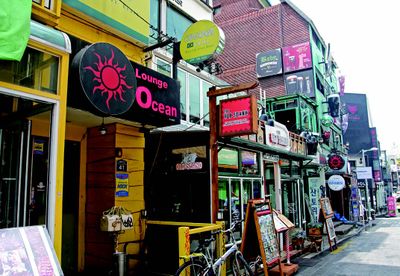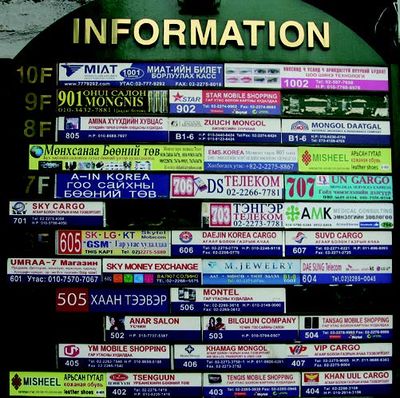Seoul - 7.2 Policies Geared Toward a Global City
| Understanding Korea Series No.4 | ||
| ← Previous | Seoul | Next → |
| 1) Global City Seoul | 2) Policies Geared Toward a Global City | Sources |
목차
Foreign Residents of Seoul and Migrant Workers
Number of foreign residents of Seoul is increasing at the rate of more than 30% annually. In 2004 there were 114,000 foreign residents in Seoul; the number increased by 200% in 2007 to 230,000, and it reached 340,000 in 2012. The percentage of foreign residents in the total population of Seoul also rose from 2.2% in 2007 to 3.5% in 2012.
| 2004 | 2005 | 2006 | 2007 | |
|---|---|---|---|---|
| Total Population | 10,287,847 | 10,297,004 | 10,356,202 | 10,421,782 |
| Korean Nationals | 10,173,162 | 10,167,344 | 10,181,166 | 10,192,710 |
| Foreigners | 114,685 | 129,660 | 175,036 | 229,072 |
| Percentage | 1.11 | 1.26 | 1.69 | 2.20 |
As of 2007 the number of foreigners who held the Working Visit status of sojourn was 110,519 or 48.2% of all foreigners residing in Seoul. The spouses of Korean nationals comprised 12.2%, and the people who had the Family Visitation status made up 8.7%. After the review of foreigners’ status of sojourn (Study Abroad and Research, Labor and Employment, Business, Foreign Language Instructor, etc.) and reclassification by their purpose of visit, 51.7% or 118,409 foreign residents were staying in Seoul for labor and employment purposes including Working Visit, Employment Management, Manufacturing, Training Working and Industrial Training.
| Study and Research | Labor and Employment | Business | Foreign Language Instructor | ||||
|---|---|---|---|---|---|---|---|
| Total | 16,392 | Total | 118,409 | Total | 5,390 | Total | 4,806 |
| Study Abroad | 8,720 | Working Visit | 110,519 | Corporate Investment | 5,143 | Conversation Instruction | 4,806 |
| Korean Language Training | 6,165 | Employment Management | 4,768 | Trade Management | 247 | ||
| Research | 539 | Manufacturing | 1,931 | Special Occupation | 3,542 | ||
| Professorship | 448 | Training Working | 1,191 | ||||
| Undergraduate Study Abroad | 366 | Industrial Training | 895 | ||||
| Master’s Degree Study Abroad | 154 | ||||||
Currently, as of 2012, there are 150,000 migrant workers in Seoul; they comprise 44.1% of all foreign residents of Seoul. Their countries of origin are: 130,000 Korean-Chinese (86.9%), US citizens (2.8%), Chinese (2.3%), Canadians (0.9%), and Vietnamese (0.7%). The survey indicated that 25.5% of them work at hotels and restaurants, 16.4% in the construction industry, 13.3% in the manufacturing, 11.9% in education services, and 7.2% in wholesale and retail trades.
Areas with Concentration of Foreign Residents in Seoul
There are two main areas in Seoul with concentration of foreign residents. The first group of areas is the traditional foreigners’ villages of Ichon-dong, Hannam-dong and Itaewon in Yongsan District where many Japanese and American soldiers resided since the Japanese Occupation and the Korean War. The second group of areas is the new foreigners’ village where migrant workers began to settle in during the industrialization period in the 1970s. The foreigners’ villages in Gasan-dong in Geumcheon District, Garibong-dong, Guro District, and Daerim-dong Yeongdeungpo District are rapidly expanding due to recent inflow of migrant workers. Traditionally, the concentration of foreign residents formed around embassies, foreign diplomatic offices and foreign schools. These two areas have become polarized according to the foreigners’ country of origin. On the one hand, more subsistence level dwellings appeared in the villages where migrant workers from developing countries live, and as the number of illegal workers increased, concerns have been raised about the areas turning into slums. On the other hand, the areas where foreigners from advanced countries live such as Seorae Village, Ichon-dong and Hannam-dong have come to be recognized as luxurious residential areas.
Since the 8th US Army was stationed in Itaewon after the Korean War ended in 1953, an entertainment district and street shops were set up in the areas nearby to cater to the people who worked in the army base, and with this other foreigners also began gathering in the area. This is one of the first areas foreign tourists visit in Korea and is known as a meeting point for foreigners. It has a unique aura that is distinct from other cities in Korea. The signs on the streets are written in foreign languages such as English, Arabic, Japanese, Chinese, etc. There are clusters of foreign brand clothing specialty shops, currency exchange offices, foreign specialty bookstores and restaurants. The Islamic Mosque is located in a steep alley behind Itaewon-no and many Indians, Pakistanis and Bangladeshis visit Itaewon regularly. About 40 embassies and consulates are situated in Itaewon and nearby areas. There are cultural and leisure facilities as well, namely the Hyatt Hotel, the Hamilton Hotel, the Holiday Hotel, the Capital Hotel, the Crown Hotel, the War Memorial of Korea, Yongsan Family Park, and the National Museum of Korea.
Many Japanese people began living in Ichon-dong in Yongsan District since 1965, a period right after the normalization of diplomatic relationship between Korea and Japan. Now, about 1,000 Japanese live there. Clusters of realtor’s offices with ‘Japanese Language Consulting Available’ sign, Japanese restaurants, Japanese-style udon places, Japanese-style pubs and ramen places are in business around Ichon-dong. Japanese parents who have gathered around the school bus stops are spotted during the commute hours, around 7 AM and 2 PM.
The whole Pyeongchang-dong in Jongno District is a typical exclusive residential area. Several embassies are situated there, and the embassy employees and foreign company executives are its residents. These residents prefer large single-family homes with sizable garden for entertaining and socializing among themselves.
- Photo 40 Street Scene of Itaewon
There are 34 embassies in Seongbuk-dong in Seongbuk District and also clustered in this area are houses as large as the embassies. Single-family homes with sizable gardens protected by high fences as well as town houses and even a few villas are concentrated there. Some foreigners prefer large single-family homes (bigger than 71 pyeong) with monthly rent above 7 million won. The corporate executives of Korean companies, foreign corporations and embassy employees mainly reside in the area, and the majority of the residents are Caucasians from Europe and the US.
The foreigners’ residential development in Yeonhui-dong in Seodaemun District attracted foreign residents with its two foreign schools: the Seoul Foreign School and the Overseas Chinese School Seoul. English-speaking foreigners with links to the Seoul Foreign School and Chinese people with links to the Overseas Chinese School live in clusters. The English-speaking foreigners are mainly embassy employees and the employees of foreign corporations living with their family; they prefer large houses. On the other hand, the Chinese prefer medium and small houses since they are living for subsistence. Two polarized residential types are in coexistence.
Since numerous foreign corporations are headquartered in Gangnam District, single or working couple foreigners who prefer short commute to their work live around the area with Teheranno as the center. They usually live in villas with monthly rent ranging from 3 million to 5 million won while short-term visitors prefer using accommodations that provide residence services. Many facilities were built in the area to tend their needs.
The French School moved to Seocho District in 1985 from Hannam-dong, and the French also relocated and ended up forming a French Town. They mostly live in family units so they prefer large units. For their convenience the street signs are written in French and Korean. Several social events are held to promote better communication between the French residents and Korean residents. French bakeries, restaurants and wine shops in the area have recently become immensely popular and are now acting as a meeting spot in Gangnam somewhat like Itaewon.
Korean-Chinese and Chinese people are concentrated in the areas near Guro Industrial Complex (currently, Guro Digital Complex) of Garibong-dong, Guro Districts, Daerim-dong, Yeongdeungpo District and Gasan-dong, Geumcheon-gu. They created their own communities such as ‘Yanbian Street’ and ‘China Town.’ A slew of Chinese restaurants, karaokes and bars are clustered around ‘Yanbian Street (Garibong Korean-Chinese Town)’, and support groups and clinics for Korean-Chinese, foreigners and migrant workers are in operation.
Mongolians, Uzbeks and Kazaks meet and do business in the areas near Dongdaemun Shopping Town and Gwanghui-dong’s Dongdaemun History and Culture Park Station of the subway line number 2. It became livelier after President Kim Dae Jung’s visit to Mongolia in 1999. The 10 story high New Geumho Tower features 70 shops that exclusively cater to foreigners including a hair salon, a grocery store, a cosmetics specialty shop, a logistics company, a currency exchange office, and a currency wire transfer center.
After the Seoul Olympic Games in 1988 peddlers from Russia and Central Asia lived in and around fashion towns near Dongdaemun, but now the commercial supremacy of the area has dwindled and its function as residential area has diminished. It is still the distribution base where the peddlers from Russia, Uzbekistan and Kazakhstan reside.
Seoul’s Global Urbanization Policy
Seoul used to be an inconvenient city. The employees of foreign corporations hesitated to relocate when assigned to Seoul even though the working conditions were good. There were inconvenient factors involving language, housing, education and recreation. Foreigners residing in Seoul now raise voices of concern over difficulties in labor, housing, education, medical services, culture, exchange, administration and social system. Various surveys conducted on tourists also confirmed that they also experienced difficulties in communication and in understanding Seoul’s guide system.
In 2007, 5 years after the Korea-Japan World Cup of 2002, Seoul Metropolitan Government, with the aim of building a global city, presented 3 policy goals in the ‘Global Urbanization Plan’ after establishing the ‘Seoul Global Urbanization Regulation.’ The first goal was to become a city that is loved by its citizens and is the pride of the entire nation. The second goal was to develop into an accepting and tolerant multi-dimensional city that overcomes obstacles such as religion, race, language and the country of origin. The third goal was to build a city of equal opportunities for everyone where everyone can peacefully coexist.
Seoul’s Global Zones and Global Centers
From 2007 the Seoul Metropolitan Government designated Global Zones and established Global Centers in order to assist business activities of foreigners and minimize inconveniences in their everyday life. There are a total of 15 Global Business Zones in operation now: 4 Global Business Zones, 6 Global Villages and 5 Global Cultural Exchange Zones. Moreover, the most famous Korean traditional markets, shopping malls and alleyways were designated as the Global Cultural Exchange Zones. They include Namdaemun Market, Dongdaemun Market, Myeong-dong, Itaewon and Insa-dong. These four areas, with the exclusion of Insa-dong, are also selected as the Special Tourism Districts. The Global Business Zones are the Mugyo-dong area near the city hall, Yeouido, Yeoksam-dong, and Samseong-dong where either foreign investment corporations are concentrated or economic activities of foreigners are prominent. Ichon-dong’s Little Tokyo, Yeonnam-dong’s Korean-Chinese Town, Hannam-dong’s UN Village, Bangbae-dong’s Seorae Village, Itaewon, and Yeoksam-dong’s Multinational Single Town were designated as Global Villages according to the population size and social history of the area whether it was a community made of foreigners from a single country or from various countries.
In order to make sure foreigners experience the benefits from the global urbanization policy, Seoul Global Center and the Global Village Centers in each zone are in operation. These centers provide administrative support and information on medical services, education and tourism to foreigners. The Global Village Centers that are set up within the Global Villages also provide administrative support and information on taxes, immigration, labor law, everyday life, visa and sojourn status, employment, credit cards, cellular phones, classes offered in the community centers and enrollment procedures, ways to connect to volunteers, and opportunities for cultural experiences.
| Name | Contents | Targeted Region |
|---|---|---|
| Global Business Zones (4 Zones) | *Attract foreign investment companies *Set up and operate Seoul Global Center |
*Downtown, Gangnam (near Trade Center, near LG Tower), Yeouido, DMC (Scheduled), Magok (Scheduled) |
| Global Villages (6 Villages) | *Designate residential zones for foreigners *Utilize as tourism resource *Childcare and medical support |
*Hannam-dong, Ichon-dong, Yeonhui-dong, Yeonnam-dong, etc. |
| Global Cultural Exchange Zones (5 Zones) | *Provide foreigner-friendly designs including road signs, sign boards and posts *Reorganize existing tourist information center |
*Myeong-dong, Insa-dong, etc. |





